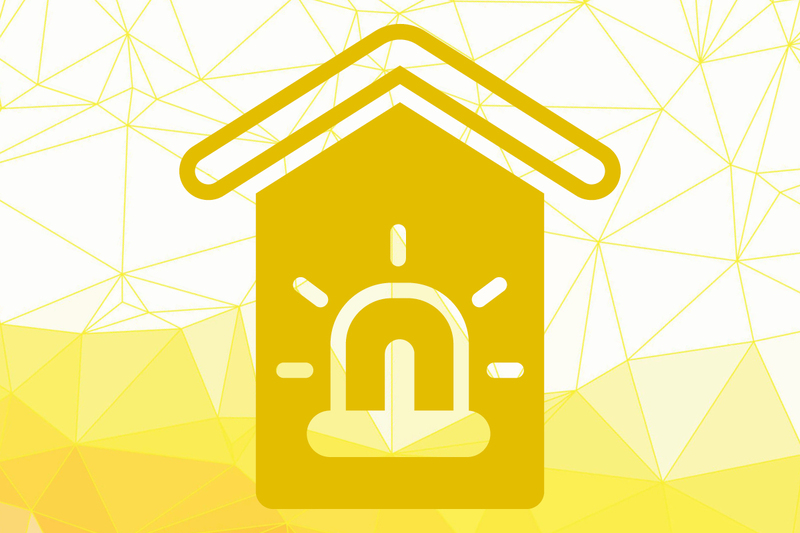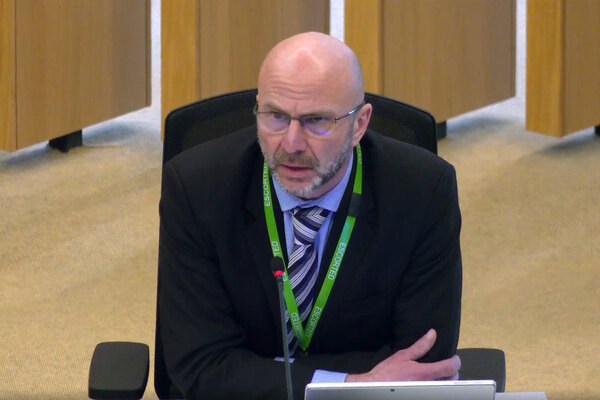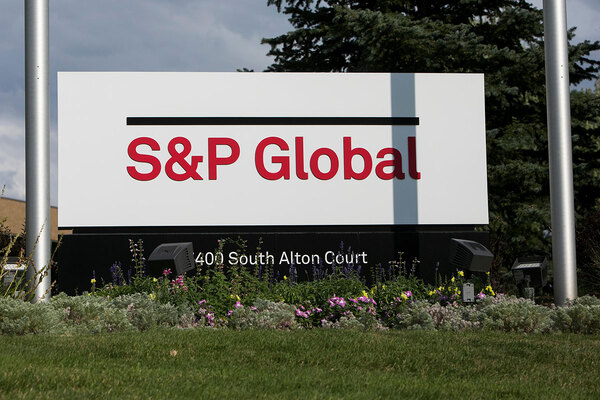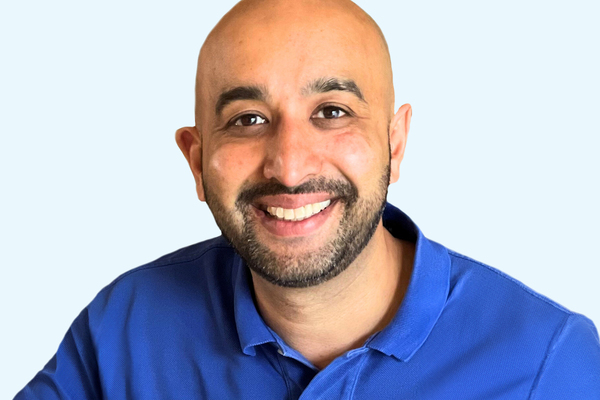Using alarm tech to boost building safety
What determines the success of sensor and alarm technologies in improving building safety? Inside Housing speaks to Michael Wright, product development manager at Aico, to find out

In association with:

Building safety continues to be a focus for social housing providers, as they work to meet the requirements of the Building Safety Act 2022 to keep residents safe in their homes.
Inside Housing asked Michael Wright, product manager at fire safety device specialist Aico, about the role that alarm technology can play.
How might sensor and alarm technology most valuably contribute to an effective building safety strategy?
Traditionally alarms in domestic settings have only had a single sensor, only detecting smoke or heat, but the technology has now moved on significantly. That means it can contribute more broadly to building safety.
Multi-sensor alarms identify multiple indicators of fire, which helps more accurately identify when a fire is taking place, but also reduces false alarms. The nuisance potential for residents is therefore vastly reduced. Devices can also include sensors for carbon monoxide, meaning residents only need one device to detect both risks – and landlords only need to install one piece of kit.
It’s possible to link alarms together via radio frequency interconnection, too. If an alarm is activated in one part of the building, it can send a message via RF interconnection [the complete path that connects one device to another] to automatically sound all other alarms in the system. If control switches are installed in the building, it is even possible for a resident to check which type of alarm has been activated, where and why.
Internet connection is also an important development that broadens the contribution of this technology to overall building safety. There are an increasing number of ‘Internet of Things’ (IoT) alarm systems. These give remote visibility of the status of that system, without having to send somebody out to that property. The system is reporting its status on an ongoing basis.
If an incident did happen, then the events from that system are in a record which can be accessed online. With IoT systems, landlords can see – remotely, without needing to access a property – when an alarm was last tested; how long it’s been installed; who installed it; and what areas it covers. All this is important in building the golden thread required by the updated building safety regulations. It’s harnessing the technology to support a continued focus and check on safety, backed up by regular data collection, and enabling a smarter approach to asset management.
What characterises an effective use of this technology to improve building safety?
The first step is to choose the right system. Social landlords need to understand exactly what technology is out there, its capabilities, and what is most likely to be most effective for which properties and which residents. It’s important organisations choose the type of alarm systems which are going to be most useful for the contexts in which they’re going to be employed. That means thinking through where this technology can make the most difference.
Once a decision has been taken on which devices will be used, it is important the technology is installed correctly and effectively. That requires well-trained and competent installers. RF interconnection and IoT systems are designed to be as simple as possible – they’re absolutely not designed with complexity in mind – but there needs to be a training aspect to ensure that whoever is using or installing that system understands fully what’s required.
A lot of the systems come with tools to make that possible, including apps. The exciting thing for us as a manufacturer is that we can use apps to give step-by-step instructions on how to install a system. But it’s important those installing the system know in advance that they will need the app downloaded, and that they have been given a username and password, and so on.
Michael Wright is a product development manager at Aico. He joined the firm in 2004 and has worked in roles including technical manager and marketing manager before taking up his current post.
He holds a degree in electrical and electronic engineering and is on the board of the Electrical Distributors’ Association, a data pool for the UK’s electrotechnical supply chain.
What issues can prevent sensor and alarm technology making a full contribution to building safety? How can these issues be overcome?
When somebody hasn’t got the most out of an alarm system, or it’s not quite performing how they would want it to, training can help. There is a lot of training material out there now from a wide range of providers, and so we’d definitely encourage social housing providers to include that as part of their approach to any new alarm system.
The other important aspect of getting the best value from sensor and alarm technologies is ensuring residents are fully engaged.
Which methods tend to be most helpful in building resident understanding of, and engagement with, these devices? What happens when residents aren’t adequately engaged?
Resident engagement is vital if alarms and sensors are to make a valuable contribution to building safety. If residents are unfamiliar with the devices installed, or are unhappy with them, or cannot use them properly, the value of the technology is limited. Engagement can begin long before any installation. I know a number of housing providers that have held resident events as soon as a system has been selected. Manufacturers can show the product to the residents, so they’ve seen it, they know what it’s going to look like, they know how it operates and they’ve had a chance to ask questions.
What’s key is that they’ve been offered an understanding of what the system will be doing, why it’s important, and other basic information. If a multi-sensor device is being used, it’s also helpful to address any pre-conceived ideas they might have about the device meaning more false alarms or activations. In fact, the opposite should be true: it will protect from fire, but shouldn’t go off because of normal cooking fumes.
If they have that awareness, they understand what’s going in and they’ve bought into it, it’s likely they will be more supportive and responsive in terms of the actual install and getting into the property. Evolutions in technology often mean this is a quicker process than it once was. Things like RF wireless technology minimise the amount of physical cable that needs to go into a building, which makes it quicker for the installation teams and less disruptive for the resident themselves.
When the system is in, it’s important to talk to residents about ongoing aspects, such as how and when to test the system. Again, it’s worth social housing organisations thinking about the technology that’s available on the market that might make it easier for residents to do regular checks. Reaching a test button on an alarm is much harder than using a wall-mounted controller. We’ve got more than 250,000 connected systems in place across the UK and in different housing providers, and we’ve seen that the testing rate is more than double when the system has a wall-mounted controller.
Some housing providers also use specific resident communication technologies to share continuing advice on alarms. If a social landlord or an alarm system provider has a resident app or website, for instance, it can be useful for it to have things like testing reminders and other core information. All of this makes sure that these devices can make the largest possible contribution to continuing building safety.
Recent content in association with Aico
CPD webinar on demand: the importance of good quality data to good air quality
As part of Inside Housing’s CPD offering, watch the full webinar, ‘The importance of good quality data to good air quality’, and earn CPD minutes
Sensor technology to keep homes safe
Jordan Toulson, head of product at HomeLINK, explains how networks of sensors that gather data and exchange information can make homes safer, warmer and more energy efficient
How smart devices are transforming homes
Chris Jones at smart home technology provider HomeLINK explains the role technology can play in improving homes and helping residents to better understand where they live
Is the sector providing healthy homes?
Inside Housing ran a survey for the new Healthy Homes campaign, in association with safety tech specialist Aico, to find out how effective the sector is at creating healthy homes for residents
CPD module: the importance of indoor air quality
What is indoor air quality, why is it important, and how can it be improved in social housing? Professor Tim Sharpe, head of the department of architecture at the University of Strathclyde, explains. Read this article, take a quiz, earn CPD minutes
Fuel poverty crisis: ‘I only put the heating up to 16 degrees’
Since losing his job due to an industrial injury, 60-year-old Vivid resident Robin Parvin has been unable to cover the basic outgoings. In a video interview we hear from Jack Whiting, a money advice and benefits advisor at the association, about how it is supporting Robin
Why it is vital to remember the importance of working CO alarms
To keep residents safe, and to stay in line with new regulations, social landlords need to know they have working carbon monoxide alarms in the right places. Andy Speake at Aico explains how they can do this
Tenant engagement is vital for landlords to improve standards, safety and satisfaction
As part of Inside Housing’s Resident Safety Campaign, in association with Aico, we spoke to Stephanie Kelley and Val Scollen at Thirteen to find out how residents are shaping its approach to building safety
Which types of fire safety devices can help deaf residents?
Housing secretary Michael Gove recently underlined the importance of establishing personal evacuation plans for disabled and special needs residents. Andy Speake from fire safety specialist Aico and Stephen Johnson, an NHG resident who has a profound hearing impairment, explain how technology can be adapted for people who are deaf or hard of hearing










